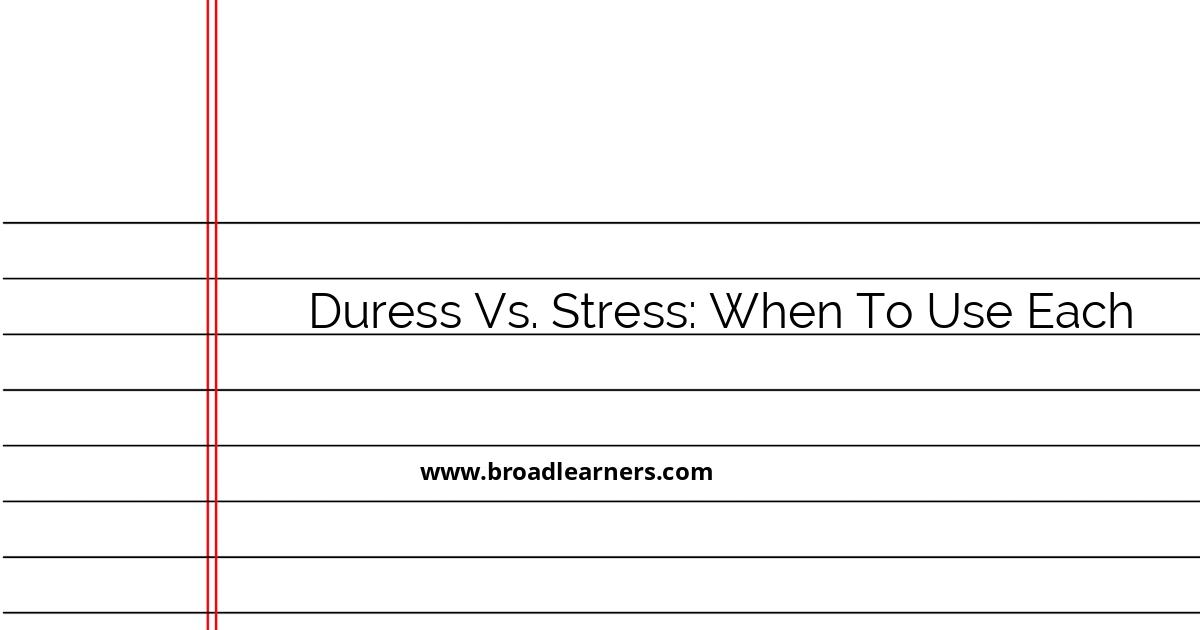In the English language, choosing the right words to convey your meaning accurately is crucial. Two words that often cause confusion due to their similar connotations are duress and stress. While they both relate to pressure or strain, they are used in different contexts. Understanding these distinctions is essential for effective communication. In this article, we will explain in detail when to use each term, along with illustrative examples.
Understanding Duress
Duress refers to a situation where someone is forced to do something against their will due to the use of threats, coercion, or physical harm. This term is often used in legal contexts where it describes situations where a person is compelled to act in a certain way because of pressure exerted by another individual or entity. The act performed under duress may not be entirely voluntary due to external constraints.
Examples of Duress:
- The confession was made under duress.
This sentence indicates that the confession was obtained by exerting pressure or threats, therefore questioning its validity. - The witness testified under duress and later recanted their statement.
Here, the witness provided testimony that was influenced by threats, which suggests that it was not given willingly.
Understanding Stress
Stress, on the other hand, refers to a state of mental or emotional strain resulting from demanding circumstances. It can also refer to physical force or pressure on a particular object or structure. Unlike duress, stress doesn't necessarily involve threats or forced actions by others; it often relates to an individual's internal response to external pressures.
Examples of Stress:
- The deadline for the project caused her a lot of stress.
This example illustrates how the high demands of a project can lead to emotional or mental strain without any coercion involved. - Exam stress can affect student performance.
In this context, stress refers to the pressure students feel due to the impending exams, which may impact their ability to perform well.
Key Differences
- Nature of Pressure:
- Duress involves external pressure typically through coercion, while stress involves internal pressure often due to demanding situations or circumstances.
- Source of Influence:
- Duress often comes from another person or entity forcing an action, whereas stress may arise from personal challenges or workloads.
- Context of Use:
- Duress is frequently used in legal contexts, while stress is used in everyday language to describe common life challenges.
Conclusion
Understanding the difference between duress and stress is vital for precise communication. Duress is associated with a compelled action through threats, typically in legal scenarios. Stress relates to emotional or mental strain due to challenging situations. By using these terms correctly, you can enhance the clarity and effectiveness of your language, ensuring that your intended message is clearly conveyed.

Did I miss anything? Respond below